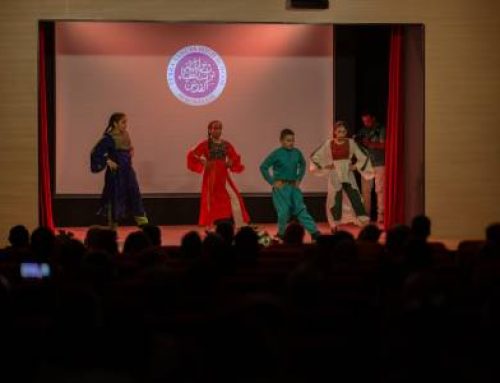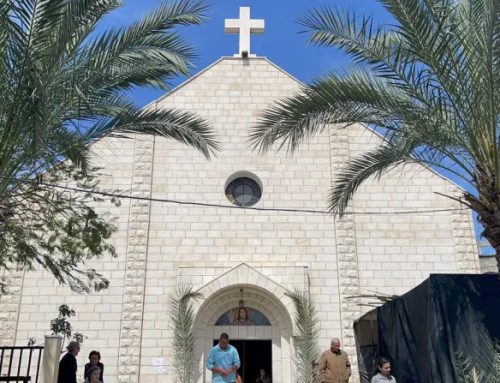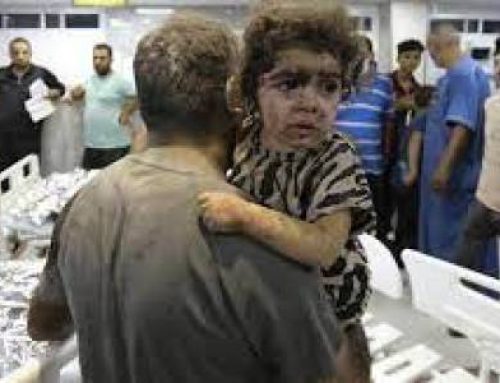With the help of the French NGO “Fraternité en Irak” (Brotherhood with Iraq), Father Jacob Youssef Hasso Isso is working on the reconstruction of Mar Behnam which ISIS attempted to blow up. It is an important place for Christians in the area and is also a Muslim pilgrimage site.
“I always celebrate Mass, even if there’s no one here”, says forty-six-year-old Fr Jacob.
Here in his monastery dedicated to Behnam and Sarah, two fourth-century martyrs, he continues his work tirelessly but with apprehension. In June 2014, terrorists set up a base in Al-Khidr, the small Arab village opposite the monastery.
“We stayed here for forty days with ISIS just over there”, he says.
Then on 20 July, the terrorists allowed the monks to leave.
Liberation of the Nineveh plains in the autumn of 2016 didn’t bring an end to Jacob’s exile. He took refuge in Kurdish Iraq for a long time before coming back to the monastery for the first time last December after Al-Khidr was taken back. Since August he has been going back every day, but he hasn’t yet spent the night in his monk’s cell. Every night he goes back to Qaraqosh, twenty kilometers to the north.
He carries the sacristy in a small grey suitcase, which also contains a chalice, his chasuble and meticulously folded pieces of altar cloths. That morning, he celebrated Mass for a handful of soldiers guarding the monastery.
Gradually, the sound of his chanting breathes life back into the 12th-century church which was ransacked by ISIS. On one wall is a damaged high-relief sculpture of Saint Behnam holding a sword upon a horse. Another smaller one has gone completely.
At least the sculpted vaults, the doors and black marble columns of this example of Atabeg architecture [which takes its name from the Turkish dynasty that ruled Mesopotamia from the 12th century] are still intact.
Outside, the graffiti left by the terrorists has been removed. The courtyard is filled with rubble from the dome of Saint Behnam’s tomb, which was blown up by ISIS in March 2015. The French organization Brotherhood with Iraq (Fraternité en Iraq) is funding and coordinating reconstruction work.
They were contacted by Bishop Abdelsalam Simaan, 68, originally from Qaraqosh. He is a retired archeologist and is overseeing the clearing works.
“I don’t want it to be more beautiful or grand, but more authentic,” he says.
Over the summer, he sorted through the precious gypsum bricks from the old part of the dome. Built into the hillside, the mortuary chapel was left almost completely intact. The monks removed the relics and have stored them safely in the bishopric.
“ISIS put nineteen barrels of explosives inside, which were left unexploded”, says the archaeologist.
The canisters filled with homemade explosives line the wall waiting for bomb-disposal experts to take them away.
For safely, the guards have been ordered not to allow either Christian or Muslim visitors inside. Mar Behnam is a pilgrimage site for Muslims too. They come here to pay homage to Al-Khidr (“the Green” or “the Verdant”), a mysterious figure highly revered in Sufism, a mystical branch of Islam.
“There was no wall around the monastery before 1984,” says the village leader, 49-year-old Mahmoud Ahmed Omar Abdallah.
Muslims worked the land and took care of the monk’s livestock. There used to be twenty-five Christian families living in Al-Khidr.
Both the building and this united community have been destroyed and now have to be reconstructed.
But the archeologist, Abdelsalam, is optimistic.
“You’ll see thousands of people come back here on the monastery’s feast day [December 10th],” he predicted.
Source: La Croix






